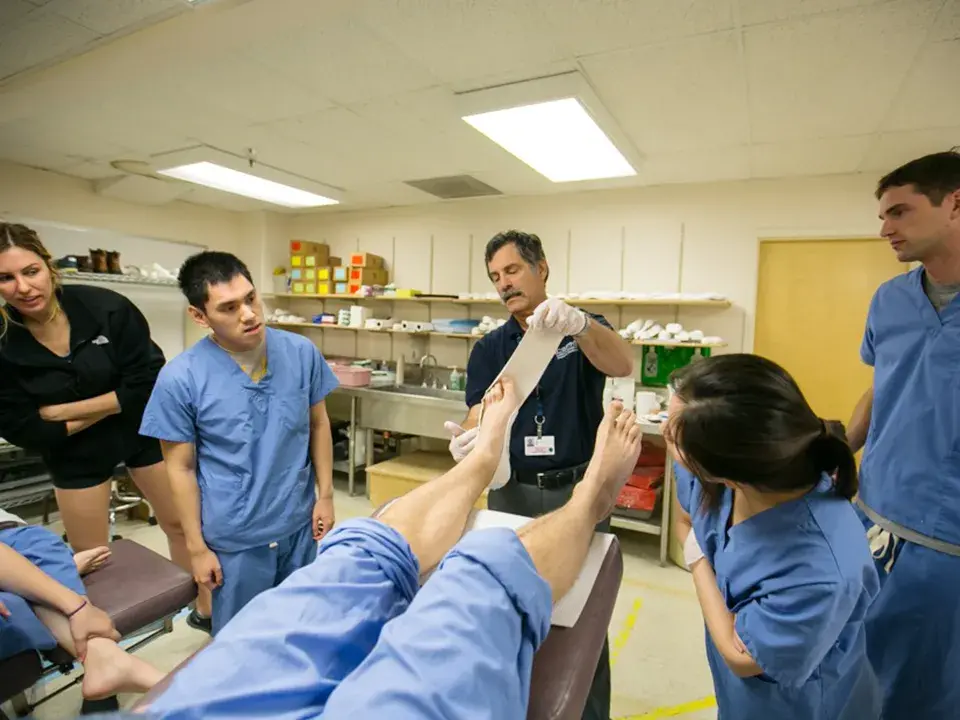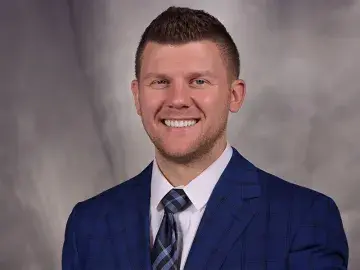Why I Chose a DPM over an MD or DO

Student Voices is a blog series written by SMU students. If you have an idea for a story, reach out to Sasha Solomonov at ssolo@samuelmerritt.edu. This article is written by Podiatric Medical student Blake Wallace.
When most people hear the words “medical school,” usually what comes to mind is an MD, medical degree, or a DO, which refers to Doctor of Osteopathic Medicine. But there’s yet another category of medical school that produces physicians who work autonomously, diagnosing and treating patients, and performing surgery: a DPM. This less widely-known medical degree refers to a Doctor of Podiatric Medicine, and that’s exactly what I’m studying to become.
When I first applied to medical school, a DPM program was not on my list. I was disheartened when I did not get into any MD or DO programs, and I thought the best way to improve as a candidate would be to gain more medical experience. It was only after I started working as a medical assistant for a podiatrist that I fell in love with the profession, and the next time I applied for medical school I chose to only apply to DPM programs.
There are tons of reasons why I chose DPM, and the best way to share them is to compare the medical school program options.
Medical School
| MD | DO | DPM |
4-year degree | √ | √ | √ |
Residency | √ | √ | √ |
Optional fellowship | √ | √ | √ |
When I first worked for that podiatrist, I shared the common misconception that she went to “podiatry school” rather than “medical school.” What many people don’t realize is how similar the road to becoming is DPM is compared to an MD or DO.
To qualify for any of the programs, a student must maintain a high GPA and earn a bachelor’s degree while demonstrating an ongoing interest in leadership, medicine, and volunteer work. The student must also score exceptionally well on the MCAT (Medical College Admissions Test) and obtain letters of recommendation from faculty and physicians as part of the lengthy application process.
Each program takes four years to complete, requires a residency prior to practicing under one’s own license, and allows the doctor to obtain a fellowship after residency.
The curriculums are also strikingly similar. Like MDs and DOs, DPMs learn and master anatomy, physiology, pathology, biochemistry, pharmacology, and immunology of the entire human body.
Also, each degree requires a residency in the chosen field of practice and the completion of board certification, as well as an option to complete a fellowship in an ultra-specialized area.
Since all three degrees are so similar, why did I ultimately choose podiatric medicine?
Flexibility
| MD | DO | DPM |
Physician/surgeon | Can be a physician or a surgeon | Can be a physician or a surgeon | Can practice as a physician AND a surgeon |
Road to practice | Residency is 3-8 years | Residency is 3-8 years | Residency is 3 years |
Residency placement | 75% of students placed | 75% of students placed | Nearing 100% of students placed |
Lifestyle | Can be erratic and long hours | Can be erratic and long hours | Typically normal business hours |
First, podiatrists are both physicians and surgeons. I have always wanted to run a private office where I build relationships with patients over the years, yet I also wanted to perform surgery. As a DPM I can do both.
There are also practical reasons why podiatric medicine appeals to students. For those graduating with an MD or DO degree, there are only enough residency placements for approximately 75 percent of graduates. Because a residency is required to practice medicine, that can leave many without the promise of a job. In contrast, residency placement for graduating DPM students in recent years is nearing 100 percent and only lasts for three years, as compared to other specialties that take up to eight years.
Lifestyle is an important consideration as well. Most podiatrists have a relatively normal business schedule. While some DPMs seek jobs where they are on call for hospital trauma patients, most tend to run private practices where they see patients Monday-Friday 9-5.
Treatment Approach
Finally, I love the way that podiatric medicine treats conditions through biomechanical, physical or surgical approaches. While systemic medications are used to cure infections, podiatric physicians do not place patients on chronic medications.
There is also satisfaction in taking a patient’s pain away during their first visit. Many patients come in with painful callouses or ingrown toenails that we are able to fix immediately. We also are able to surgically repair bone abnormalities and pathologies that affect patients’ lifestyles. Finally, we treat chronic wounds. Saving a patient from amputation is extremely rewarding.
One day I will be Dr. Wallace. And even though DPMs have the same education, training, and expertise as MDs and DOs, we are still fighting for equal recognition across the nation. Regardless of how we are perceived legally and socially, I am glad I found podiatric medicine and I cannot wait to begin helping my patients.

